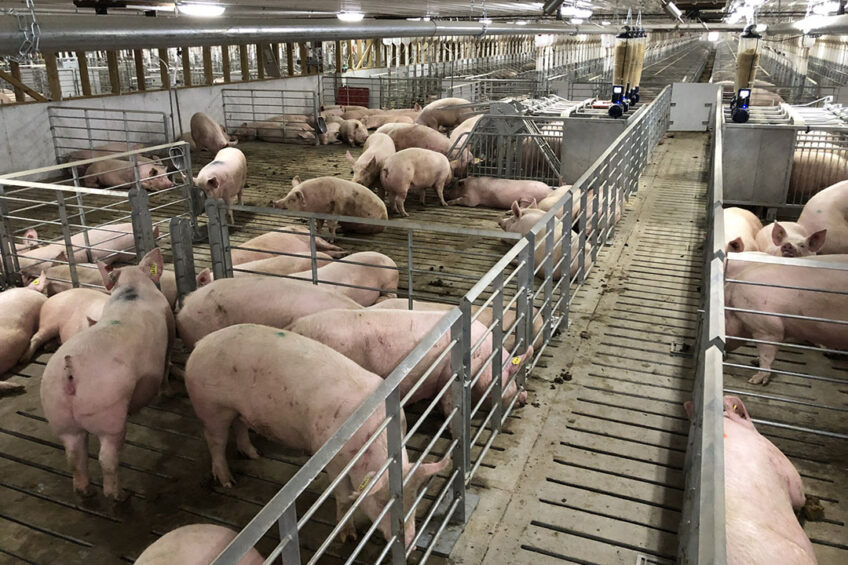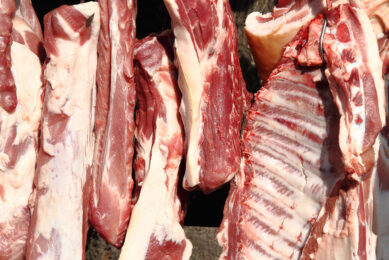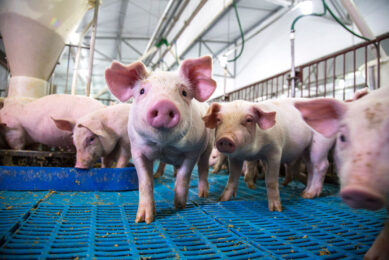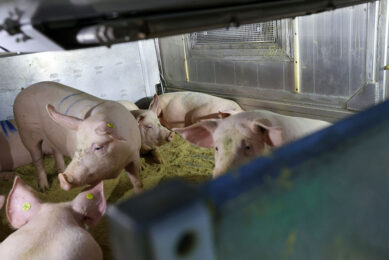Retrofitting a sow barn – 8 ideas to consider

Outside Europe, an increasing number of sow farms are switching to group housing for gestating sows. Retrofitting is an option, yet it is a long-term investment. Affordable options may not always be the best in the long run. What needs to be considered?
GESTATION
Consumers and defense groups have put pressure on governments – such as in Europe, Canada and California – and on producers’ associations to implement rules to enhance animal welfare. In swine production, the most significant change is from individual gestation to sow group gestation. This has a direct financial impact on producers.
For newly constructed barns, group housing instead of stalls usually does not create any additional construction cost. On the contrary, the required investment is usually about the same or lower, depending on the type of feeding technology selected (less equipment). However, where a retrofit is done, the amount invested can quickly become exorbitant. Here are some strategies that should be analysed well if a retrofit is being considered.
 Adjusting the sow inventory
Adjusting the sow inventory
Keeping the same inventory
Many producers will analyse the option to expand the gestation section in order to have enough space to meet the regulation spacing requirements without having to decrease their herd inventory. In that case, the building design and the techniques used (herd and feeding) will dictate the amount to be invested. Plenty of feeding alternatives are available. Some will be more expensive at purchase (electronic systems) but can help decrease future feeding costs. Therefore, it is imperative to analyse all the options.
Decreasing the herd inventory
Some producers will decide to decrease their herd inventory to avoid expanding the building. The renovation cost will be decreased but a decrease in herd inventory means revenue will also decrease. For some, this is a potential solution if there is no succession, for example.
Increasing the herd inventory
Others will increase their herd inventory significantly by using the actual gestation crates for breeding crates. The new construction will therefore focus only on the group housing section and additional farrowing places. This is a great way to increase herd inventory at a lower cost per sow.
 Keeping or changing floors in group housing
Keeping or changing floors in group housing
Keeping the floors and making compromises
For new constructions (without equipment), the flooring costs can be up to 20% of the total investment. What if the floor is still good? Pen design is easy when working with new flooring. However, if the previous floors are kept, compromises are needed. Nobody wants dirty gestation pens with increased injury potential for animals. Some tips exist to reduce those risks. Keeping existing flooring is the cheapest solution. An animal welfare specialist could help determine the costs.
Changing the floors
Sometimes it is best to invest while doing a construction/retrofit so that sows/gilts can perform better. Producers have observed mortality in pens to be two to three times higher than with individual crates, mostly because of musculoskeletal problems.
 Choosing a 100% or partially slatted floor
Choosing a 100% or partially slatted floor
A slatted floor is more expensive (there are 2 floors after all) than a solid concrete floor. During the project analysis, it is a great idea to calculate the two options: 100% or partially slatted. If the design is created according to sow needs while allowing different zones in the pens (rest, feeding, moving), it is possible to have clean animals with a completely concrete floor.
 Required spacing for sows and gilts
Required spacing for sows and gilts
In some countries/states, the regulations for required space per animal must be followed. In others, guidelines exist for a minimum spacing per animal. In that case, producers have more freedom. In Canada, for example, the minimum space required per sow in mixed group housing is 1.7m2 on a partially slatted floor. Choosing such a surface brings more inconvenience vs. a bigger surface area; however, it reduces the retrofit costs by dozens of dollars/sow.
Determining alley width
Alley width for transit animals and employees needs to be considered. This is the surface area that needs to be built in the case of a new construction or will be deducted from the allowed surface for sows in the case of a retrofit. Producers often have to compromise between working space and conversion cost.
In a 60m long building with two alleys, this is tens of thousands of dollars difference between a 1m alley and a larger one. Reflection is needed on the staff movements, on the sows, on heat detection crates for boars, on taking dead animals out. There is a cost for this alley. When taking sows in or out of their pens, many animals will be moving at the same time. Should sows be able to turn around in the alley or not at all?
 Mixing sows and gilts?
Mixing sows and gilts?
Ideally, primiparous animals should always be together when placing in groups. According to regulations, the spacing requirement for gilts is different than for sows. It is important to closely consider what regulations allow and the advantages/disadvantages of mixing parities.
 Choosing a feeding system for gestating sows in groups
Choosing a feeding system for gestating sows in groups
Evaluating the feeding systems
Initial installation costs are vastly different between systems. A floor feeding system is relatively inexpensive, for example. There are operational costs associated with every option. The Gestal 3G is a versatile option. Being a free access smart feeder, it follows animal welfare requirements without additional feed costs, frequent aggression between sows, gilt training and herd performance loss associated with the lack of control on intake.

FARROWING
 The front alley in farrowing rooms?
The front alley in farrowing rooms?
Eliminating the alley
If a producer decides to add farrowing crates, an option is to eliminate the front alley. That is a common practice in Europe, where producers often do not have this available space yet still have impressive herd performance. The saved area can represent a large amount of money in the situation of a farm expansion or can allow installation of bigger farrowing crates in the case of keeping the same herd inventory.
Keeping the alley
Is a front alley necessary? This question is even more important if the decision was made to install electronic feeders in farrowing. In the US, front alleys are common. It is wise to consider that producers will need to get into the farrowing pens to reach the piglets, to inject sows or to clean troughs. A veterinarian can give clear advice on this.
 Choosing farrowing crate surfaces
Choosing farrowing crate surfaces
In the case of new constructions or expansion, producers opt for larger farrowing crates. That means more investment right away. In the last few years, increased prolificacy has been observed in terms of piglets born alive, but not in terms of weaned piglets. Lifting/hydraulic crates can be an interesting solution to lower pre-weaning mortality. However, the cost for this technology is very high. If the producer has above average pre-weaning mortality, the option can be considered.
 Beheer
Beheer








 WP Admin
WP Admin  Bewerk bericht
Bewerk bericht